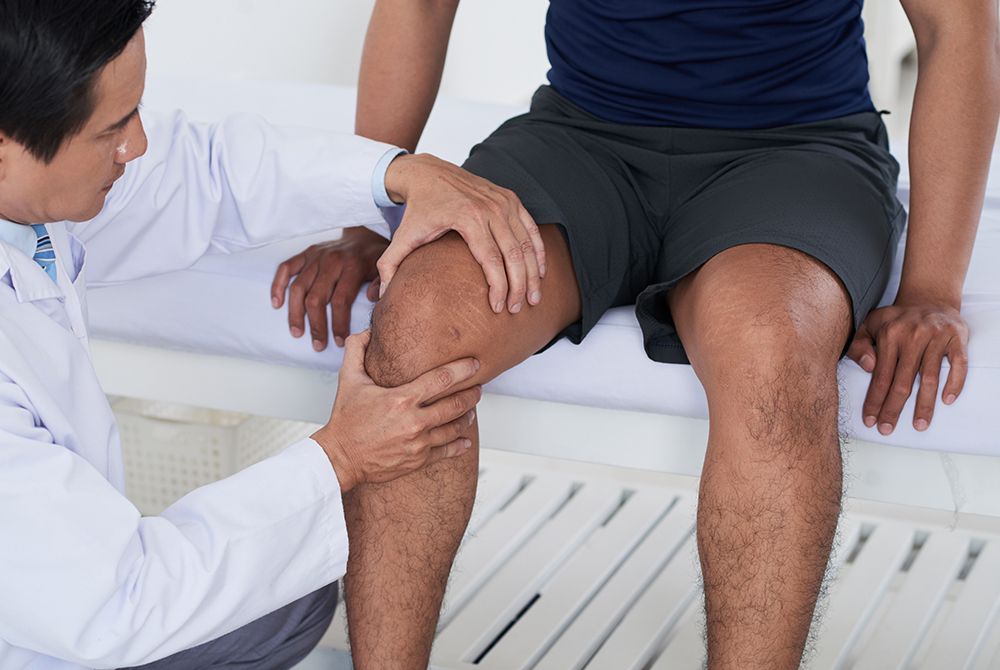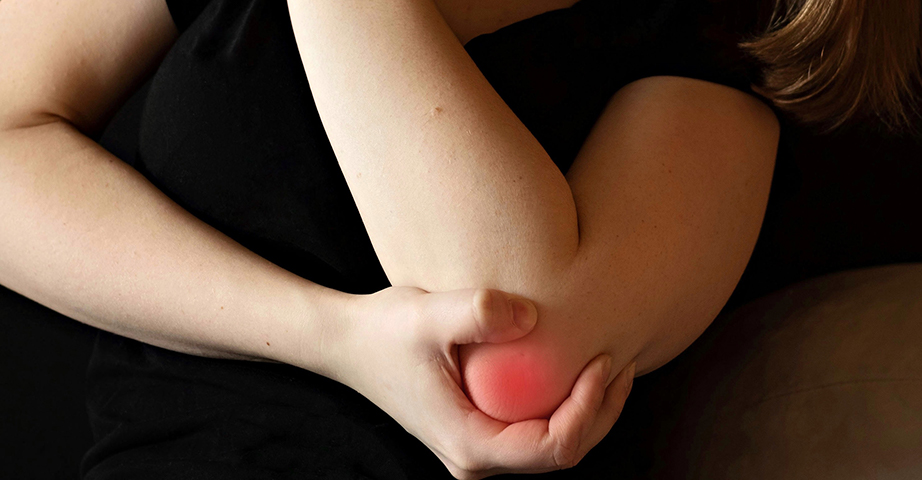Glucosamine for joints? Which supplement for joints should I choose?

Knee, shoulder or hip pain is a very common problem that increases with age. Supplements for joints may be helpful, as long as the type and concentration of active ingredients are well chosen. The main substances in joint preparations are glucosamine and chondroitin. Why does glucosamine work for joints? What other ingredients should a good joint pain supplement contain?
How does glucosamine work for joints?
Osteoarthritis is a very common problem that increases with age. Natural wear and tear of the joints, reduced production of joint building blocks by the body, mechanical damage or excessive body weight are among the factors that weaken the joints and cause chronic complaints. One of the best-researched substances that is scientifically believed to help prevent and treat joint degeneration is glucosamine.
Glucosamine is a substance produced in the organism from glucose molecules and the amino acid glutamine. It belongs to the group of amino monosaccharides. Glucosamine is crucial for joint health, as it is an important building block of joint cartilage and a substance that facilitates its repair. How does glucosamine benefit joints?
- Glucosamine reduces the activity of certain enzymes that play a role in the processes of damage and degradation of joint cartilage.
- Glucosamine makes it easier for chondrocytes to reach the damaged areas of joints and thus enables their regeneration.
- Glucosamine inhibits the activity of pro-inflammatory cytokine IL-1β and reduces the production of nitrates and prostaglandins. Reducing inflammatory processes has a beneficial effect on the repair processes taking place in the cartilage tissue.
Glucosamine is not present in food. The only form of supplying glucosamine to the joints is supplementation. On the market, it is available in three forms - glucosamine sulphate, glucosamine hydrochloride and N-acetylglucosamine.
Feedback from users on glucosamine can be mixed. It is not because of its real effectiveness, but because we want to see results quickly, and in the case of damaged joints this is simply not possible. The tissue needs time to regenerate. However, the opinions of the scientific community are similar - supplemented glucosamine effectively supports the joints if there is a deficiency of this substance in the body. Glucosamine sulphate during the studies was dosed at the level of about 1000 mg a day.
Recommended products with glucosamine
What should medicine for a sore knee contain?
Knees are the joints that are most often damaged and cause pain. Alongside them, there are shoulders and hips. Medicines for knee joints, as well as for all painful joints, contain not only glucosamine but also many other substances that build up cartilage, are part of the synovial fluid, reduce inflammation and help to rebuild damaged joints. A drug for a sore knee may contain a single substance in high doses, such as glucosamine, chondroitin or hyaluronic acid, or provide a combination of different ingredients that together form the effective knee joint medicines.
The substances that appear most frequently in medicines recommended for a painful knee are, except glucosamine:
- chondroitin - a building element of joint cartilage. Scientific research confirms that taking chondroitin reduces pain and stiffness of joints as well as slows the progression of osteoarthritis. In people complaining of knee joints, pain is reduced by at least 20% as a result of taking chondroitin. The dose of chondroitin used in studies is 400-800 mg 2-3 times a day.
- collagen – the main structural protein, the glue that binds the bones, cartilage and skin cells together. Research on the effectiveness of collagen in reducing joint pain and stiffness is not clear, but the suggested effective dose is 10g per day.
- hyaluronic acid - a substance produced by the body, whose main role is keeping the connective tissue moist. In the joints, hyaluronic acid is responsible for proper lubrication, preventing bones from rubbing against each other and feeling pain when the joints are working. Taking 80-200 mg of hyaluronic acid daily for at least two months has been shown to significantly reduce knee pain in people with osteoarthritis, especially those between the ages of 40 and 70.
- Boswellic acid - extracted from Indian frankincense (Boswellia serrata) has strong anti-inflammatory effects. Based on a 2020 meta-analysis, it was claimed that it may be an anti-inflammatory, anti-arthritic and analgesic for the treatment of osteoarthritis. Supplementation with doses of 100 to 250 mg for at least 4 weeks brings relief of pain and stiffness in the joints.

Joint supplement ranking
How to create a ranking of joint supplements, if:
- new products appear on the market all the time?
- science does not clearly state which substances and in what combinations are most effective?
It is a very difficult task, especially since the ranking of supplements for joints prepared by the manufacturer or the shop selling them is not the most reliable in the eyes of the customer. Therefore, instead of a ready-made ranking of supplements, we will present you the principles that, in the opinion of specialists, should be followed when choosing tablets for knee and other joint pain.
How to choose a good joint supplement?
- Use multi-ingredient products. This way you will have a better chance of supplying your body with the ingredient that it actually lacks. Unfortunately, the fact that you have a painful knee or a popping shoulder does not tell you anything about what your joints are missing. That is why it is a good idea to take preparations rich in various joint strengthening components.
- Check the number of active substances and the standardisation of extracts. The best way is to follow the doses that are effective in scientific studies. Even the product containing the largest composition on the market will not work if the amount of active substances in it is insufficient.
- If you cannot find a good multi-ingredient preparation, choose different single-ingredient joint supplements and use them simultaneously. By choosing, for example, glucosamine, chondroitin and vitamin C powder, you can compose your own supplement with high doses of the active substances.
- Don't be influenced by marketing. Knee pain tablets will never work like a hyaluronic acid injection given directly into the joint. Claims of new generation collagen, promises of pain relief after a few days of use... These are all marketing tricks. There is no way that joints can stop hurting and regenerate after seven days of treatment. To recover from osteoarthritis, it is necessary to take long-term, varied supplements for at least three months and avoid putting excessive strain on painful joints. It does not mean a lack of exercise. An active lifestyle is advisable because it stimulates the use of the building blocks from the joint supplements.
- Pay attention to the price. Too cheap products signal that there are only marginal amounts of active substances in the tablets. A multi-ingredient joint supplement for £10 a month? Sounds suspicious. However, the price does not have to be very high. The average cost of a monthly supplementation with tablets for the knees is about 30-40 PLN.
